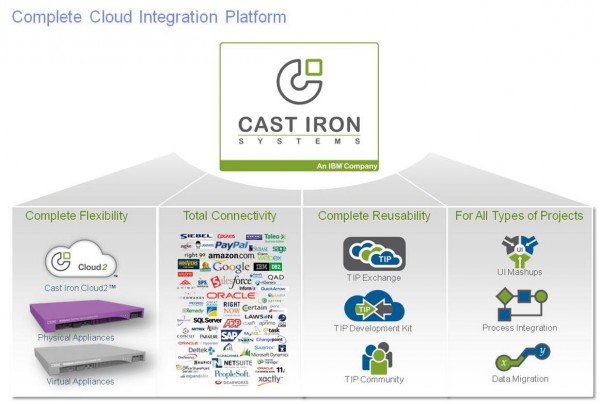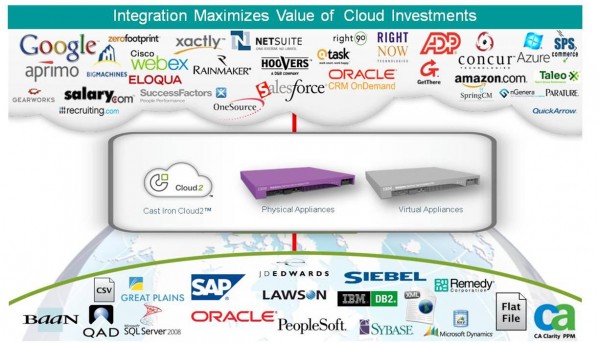In the previous parts we discussed about Cloud Computing definition and Cloud Applications.
Having so many applications on Cloud and enterprise, there is demand for integration of these applications to exchange data and complete the business process. In this section I am going to discuss about IBM Cast Iron, the Cloud integration tool, to integrate Cloud applications with Enterprise quickly and create business value.
According to Gartner Cloud SaaS market reaches to $16 Billion by 2013. With faster adoption rate and quick implementation cycles Cloud applications are becoming part of enterprise fast. The landscape of enterprise is becoming complex with Cloud, ERP and Custom applications.
To maximize value of Cloud Investments, Integration of Cloud Application to Enterprise is needed. Quicker we integrate these applications together quicker we can make value out of these investments.
IBM Cast Iron exactly plays such role, with total connectivity to Industry leading ERP packages and Cloud SaaS applications and reusable Template Integration Processes (TIP) , Integration can be done in days from months.
Cast Iron can be used for variety of projects like Mashups, Process Integration and data Migration projects.
Cast Iron is also available in multiple channels to either as a Cloud Service – Cast Iron Cloud2, or as a Physical appliance to be part of your data center or as a virtual appliance to install on your hardware.
Either to automate your sales force data to internal data warehouse, or do bi-directional integration from your HR (Taleo) to CRM (Salesforce.com) or Oracle CRM to Siebel Enterprise or from Cloud to your custom applications, Cast Iron provides variety of templates and easy to use mapping tools to complete integration in days.

Both real time and batch integration is very easy to implement using Cast Iron.
For faster turn-around , avoid complex custom coding and with vast exchange of templates to integrate with industry leading applications and SaaS Cast Iron, is the Cloud integration tool.

